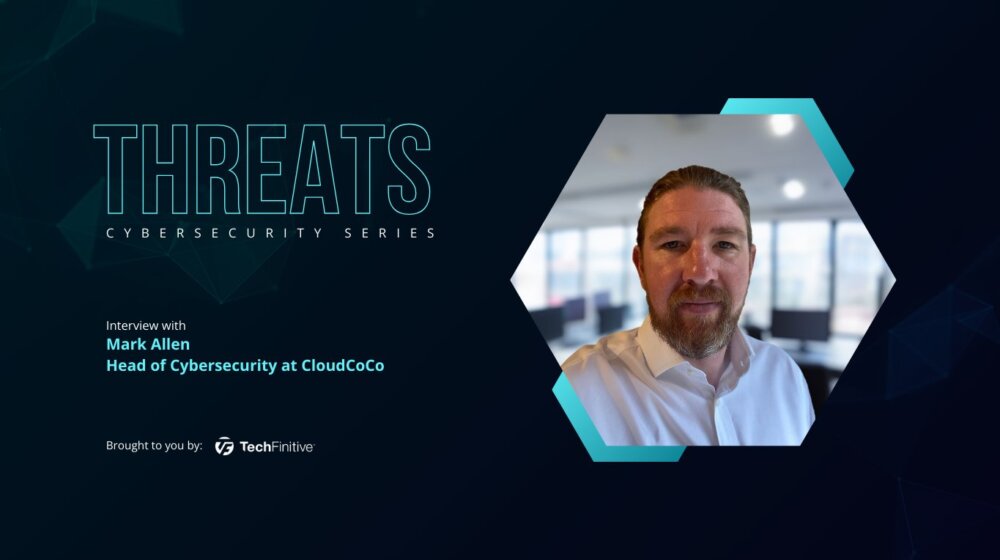
Jochem van der Veer, Co-Founder and CEO of TheyDo: “In this world of AI, we need to remember to think humanely”
How poetic that in this final interview with CX leaders we have perhaps the best quote of all: “You are not selling to bots or sheep.” You will have to read our full discussion with Jochem van der Veer, Co-Founder and CEO of TheyDo, to discover the context of this remark, but we’re not giving anything away when we say that Jochem has a keen focus on people.
Indeed, one of the mantras behind TheyDo – a journey management platform – is to be “People Fuelled”. If you’re thinking too much about the technology, or some tangential targets, rather than the people who you’re trying to make happy then you’re doomed to failure.
But we would hate for you to stop and think that’s all that Jochem has to say. This is one of the most stimulating interviews we’ve done in a series that’s been packed with great insights, and we thoroughly recommend you take time to read it. Not skim-read: read properly!
Our huge thanks to Jochem and everyone else who has taken part in our CX Today series. It’s been a pleasure to publish our 26 interviewees’ thoughts, and we hope you’ve enjoyed reading them too.
Recommended reading: You’ve heard of journey mapping, now get ready for journey management
Could you please introduce yourself to our audience? What motivated you to pursue a career in customer experience, and how did you embark on your journey in this field?
Hello, I’m Jochem van der Veer, CEO and Co-Founder of TheyDo. I am a designer first and foremost. I began my career working for agencies that were tasked with creating unique digital experiences for brands. Often, the result would miss the mark and not be as well received by the end customers even though the brief was met. This was ultimately because most of the work we did wasn’t rooted in customer needs. With that in mind, I embarked to work only on projects that thought as much about discovering the problem and solution as they did the outcome.
When I left the agency world, I created a very successful strategic design consultancy alongside my two co-founders. We quickly realised we were going from one transformation project to another, all to start from scratch again every time – sometimes even with the same customer. As the projects were always rooted in the customer journey, we started to build software with the intention of growing the consulting business. When our customers began demanding licences for the software, we realised we were on to something big and TheyDo was born.
What are your thoughts on the escalating integration of AI in customer experience and its potential influence on the future of customer service at large?
AI is all around us; everyone is currently racing to see who can tap into it effectively first. It is not surprising that some of the main headlines in recent months are like this from Klarna: “Our CS bot has done the work of 700 agents in one month”. But I think this misses the crucial point where AI can help. It can free up your most expensive resource – your people – to focus on the more sophisticated challenges your business faces (or in the case of customer service, the questions that are not accurately answered by your FAQ or bot).
We see AI as an enabling technology that augments what our teams can do. For example, when it comes to customer research or transcripts from live sessions with your customers, we can take all of these in bulk allowing you to visualise the journey, wins and losses, and see how your customer journeys emerge to reveal the ideal path.
The great thing is that in a digital world, the before, during and after of digital interaction is often missed – but AI has the power to help us understand the whole journey in its entirety.
Recommended reading: How companies can avoid the ‘Product Death Cycle’
How do you ready yourself for an AI-driven landscape as a customer experience leader? What new skills do you need?
For me, it is not so much a new skill to learn as one to remember. In this world of AI, we need to remember to think humanely. You are not selling to bots or sheep. All too often business and customer service organisations are very inside-out in their approach to service design and planning, meaning that customers are forced down very narrowly defined paths that restrict interaction, all in the name of efficiency and cost savings or ‘because you can’ do something. A better approach is to make sure you maintain an outside-in perspective. Can you ensure that your processes, interactions and product all meet the needs and expectations of your customers wherever they may be— even when that is not where you want them to be?
Do you anticipate any significant disruptions in customer experience technology for 2024? If so, what are those disruptions and why?
In the CX world, I think 2024 will be the year more organisations realise our net promoter score (NPS) programmes haven’t delivered on their promise.
Why? Because the customer experience should be a holistic approach to the business, yet today CX is yet another team, and therefore business silo with its own data, team, and process.
The big disruption that is coming, is that large companies are beginning to realise that the customer journey is the best way to organise teams across the silos and that enabling technology around journey management will propel our whole field forward.
Could you share some of your most noteworthy accomplishments that you take particular pride in?
My most noteworthy accomplishment would have to be building – together with my co-founders – a way to ensure our customers no longer make the mistake of starting from scratch repeatedly. We achieved this by championing a journey-centric approach, establishing a source of truth for all the insights and behavioural analytics, and enabling our customers to deliver experiences that are not only well executed but aligned with what the customer and market need.
What core values have played a pivotal role in shaping your approach to customer experience?
My core values are reflected in the core values of our business. Two that stand out are ‘Cloaks Off’ and ‘Customer Fuelled’.
‘Cloaks Off’ signifies our belief to be truth seekers within the organisation. It is very easy to only want to focus on what is going right but this glosses over the areas that need real focus. This honest approach encourages open and honest discussions, and to detect and look for solutions to the problems that are lurking in the depths of the business.
As you would expect in a business that aims to help its customers to please their customers, we are Customer Fuelled too. We are nothing if we do not keep that thought at the heart of everything we do.
Recommended reading: Lauren Heaton, VP of Marketing at Edge: “Businesses need to be cautious when implementing AI-driven products”
What major hurdles have you encountered as a customer experience leader, and how did you surmount them?
One of the biggest business challenges of the past century is people thinking in silos. Every individual team within a company has its version of ‘customer-centric’ but to impact the customer experience, these teams need to speak to each other and to speak the same language. Large organisations are especially vulnerable to this, with years of patterns and ‘memes’ it is difficult to push structural change.
We unite these silos by standardising the language around customers, personas and journeys, and the level of journey we are operating at. This gets everyone to buy into a standardised way of describing the actual customer experience and has a phenomenal end impact.
How do you ensure you’re up-to-date with the latest customer experience trends and technologies, and how do you integrate them into your strategies?
I read a lot— news, publications, and annual statements of the top Fortune 500. Of course, I read books too. Generally, I keep up with the latest thinking in business (e.g. The Jolt Effect, Transformed) as well as evergreen content (e.g. Smart Brevity) and my biggest interest, biographies (e.g. Jenifer Daudna).
It’s this variety that helps with our strategy. Building a business while creating a new vertical category is like having a lab on one side (where we run many experiments) and practical business impact on the other side (where we implement what works). There isn’t a single high-performing company I know that shares the same strategy as another, which shows to me how important it is to keep reading, absorbing and integrating new things. Only mediocre companies copy the ‘status quo’ verbatim— look at all the companies who wanted to be agile and are now stuck in infinite planning loops and internal politics, for example! The key when keeping up with trends is to see the difference between innovative strategies (building a remote company) and common practices (like GAAP accounting) and not try to overthink both.
What piece of advice would you offer to fellow customer experience professionals that has been particularly beneficial to you personally?
Seek out the truth, don’t be afraid to address the challenges that present themselves and listen to the signals from the market and your customers. It is better to adjust your course than to cross your fingers and hope that things will turn out OK.
In the end, experience is about customers’ feelings; and businesses in general have simply lost touch with their customers. We can’t personally know what it’s like to be our customer, so CX plays a crucial role in getting this vital capability back into the fabric of an organisation.
Are there any startups in the customer experience industry that have piqued your interest lately?
I’ve been following many AI-based survey and analytics companies that I think could deliver on a big promise: democratise constant feedback from customers at scale. The downside is that at the moment, most of them are clunky and slow so the experience for the person being surveyed is far below having a real human conversation. But if startups can find a way to collect real qualitative feedback and insights (not the ones we collect in our NPS surveys), everyone will benefit from it including both the business and the customer.
NEXT UP

Riken to integrate IBM’s quantum system with supercomputer Fugaku
IBM and Japanese laboratory Riken have announced an agreement to deploy IBM’s quantum system and integrate it with supercomputer Fugaku

Dear Lord, let this be the last World Password Day
Security expert Davey Winder explains why he wants this to be the last World Password Day ever and prays for World Passkey Day instead

Mark Allen, Head of Cybersecurity at CloudCoCo: “It’s alarming to witness the extent to which deepfakes can be weaponised”
Mark Allen, Head of Cybersecurity at CloudCoCo, provides what amounts to a step-by-step guide to keeping your business more secure against cyberattacks – including deepfakes